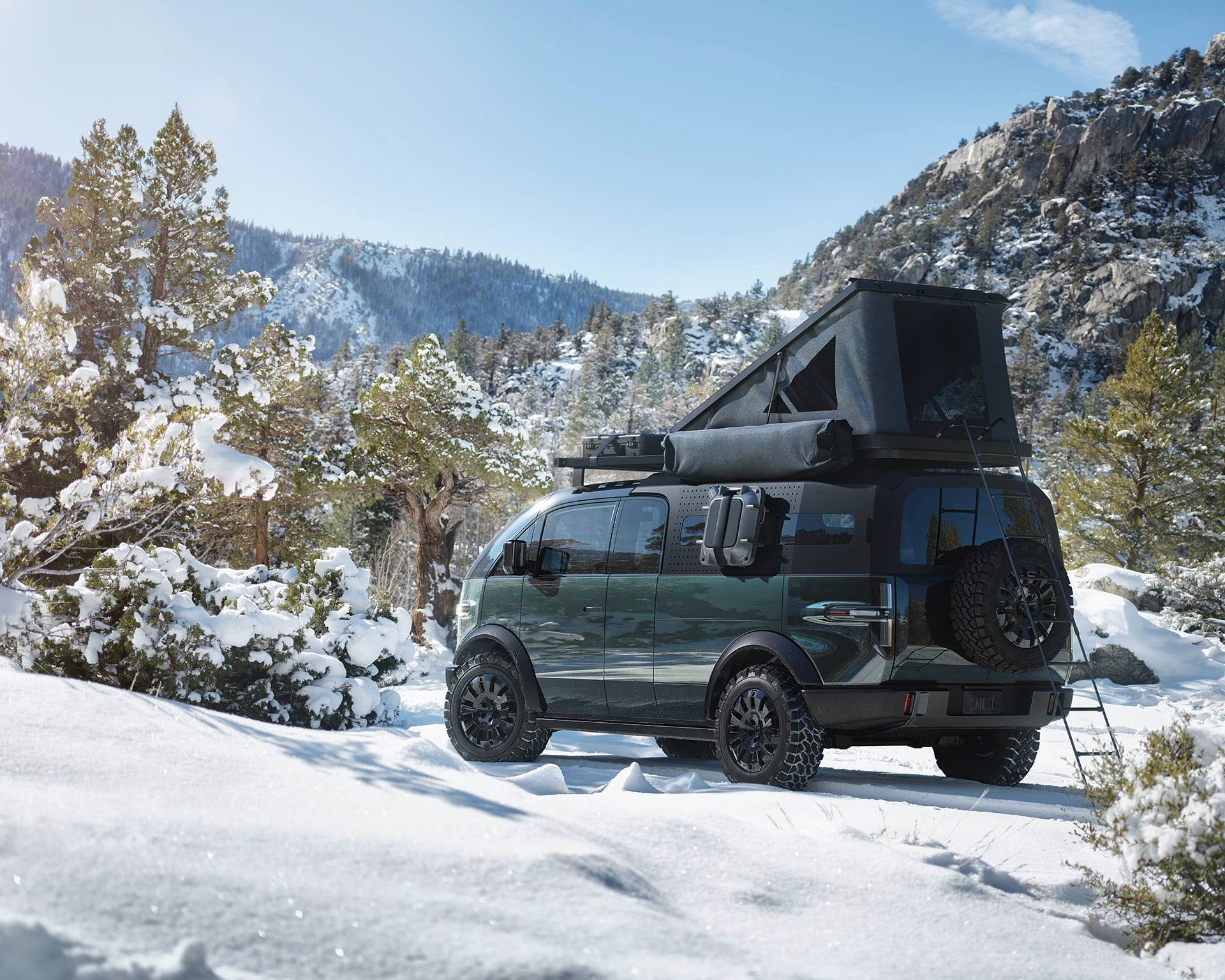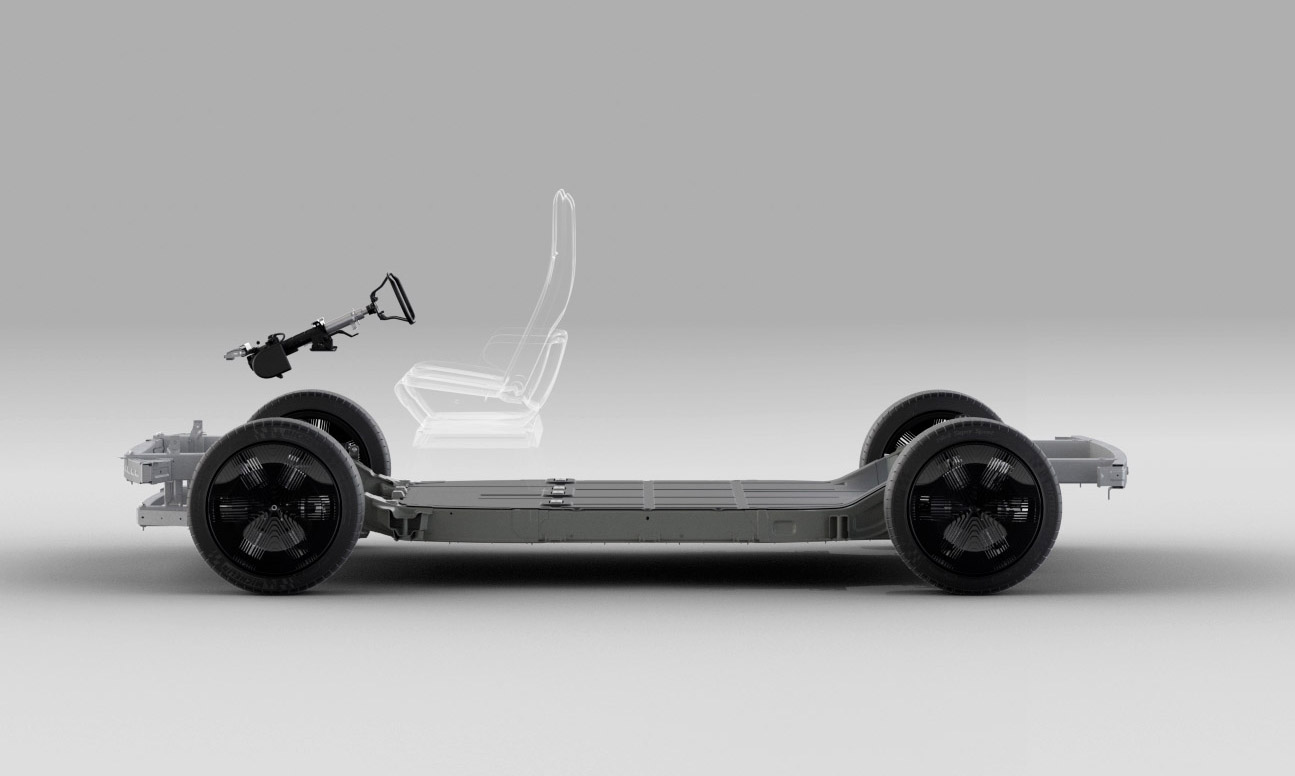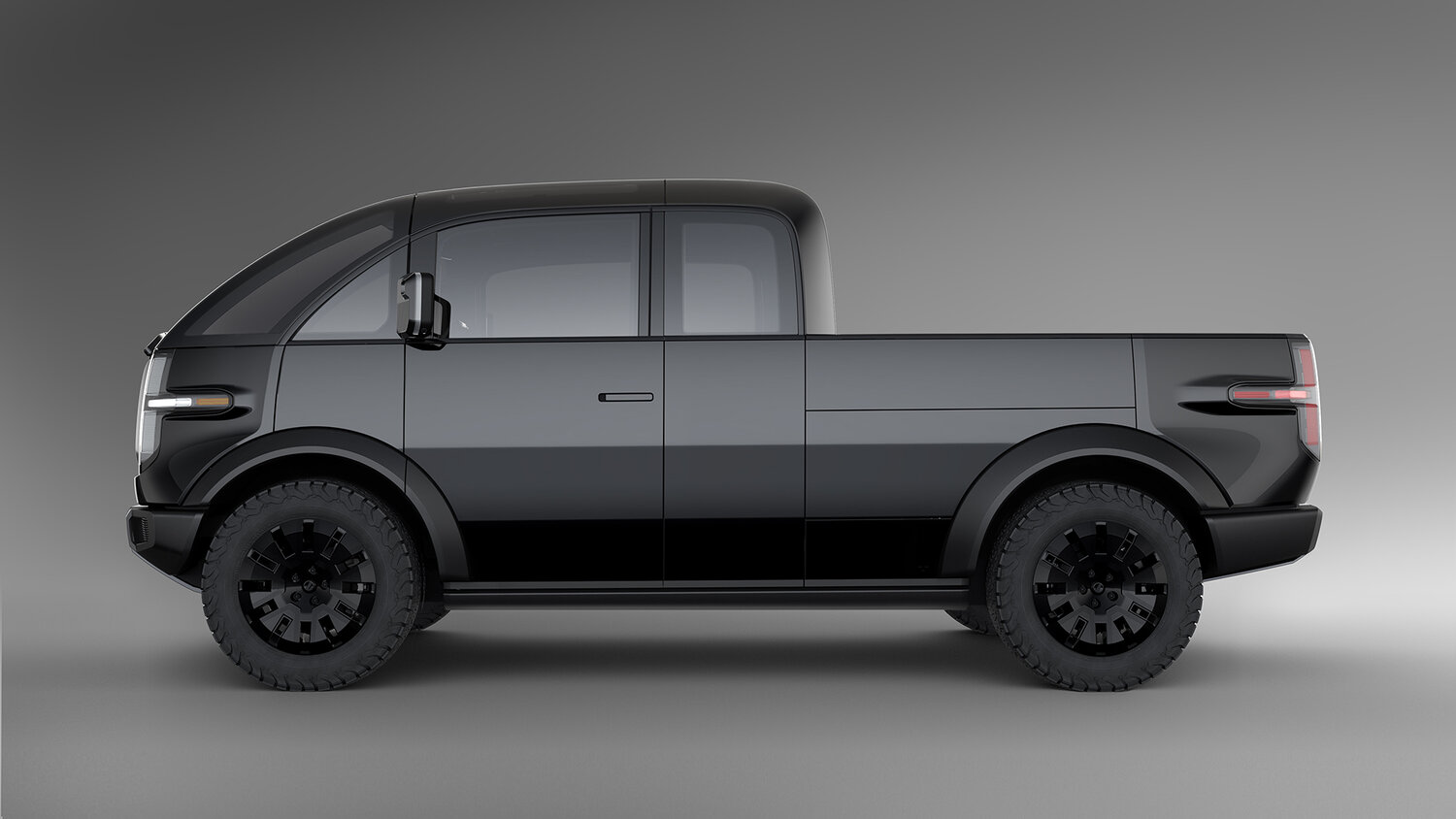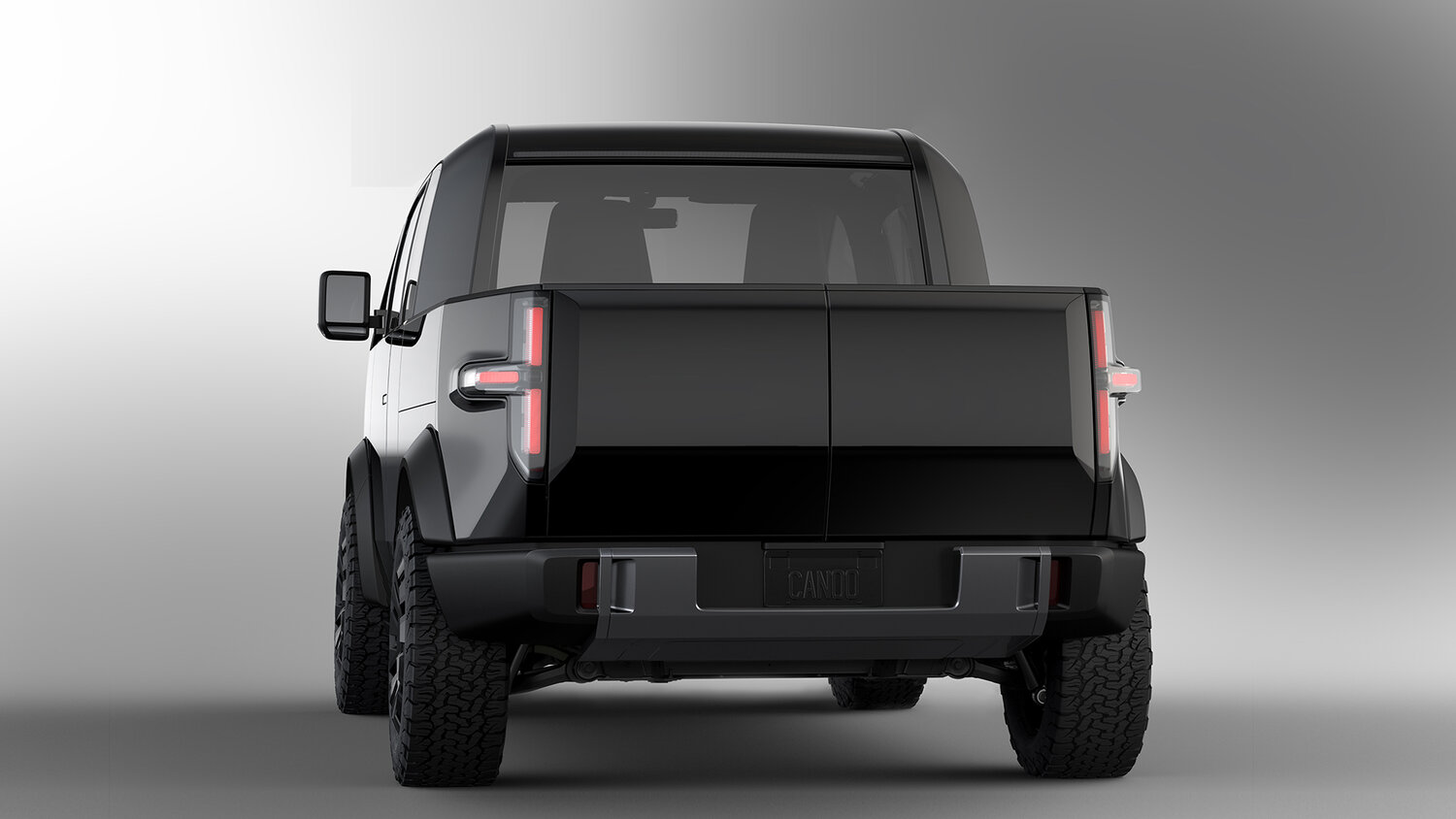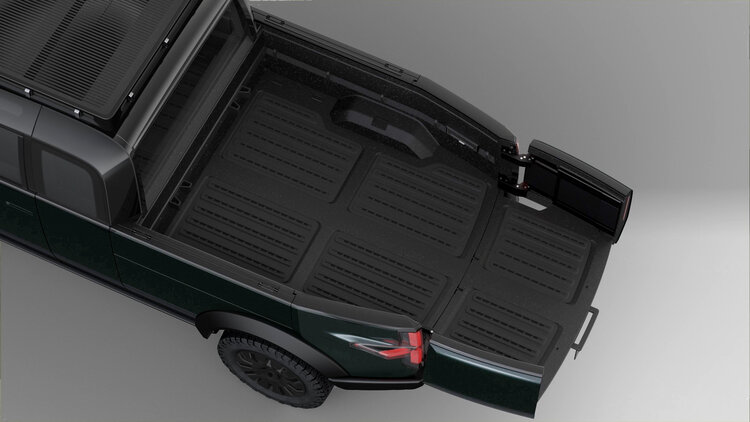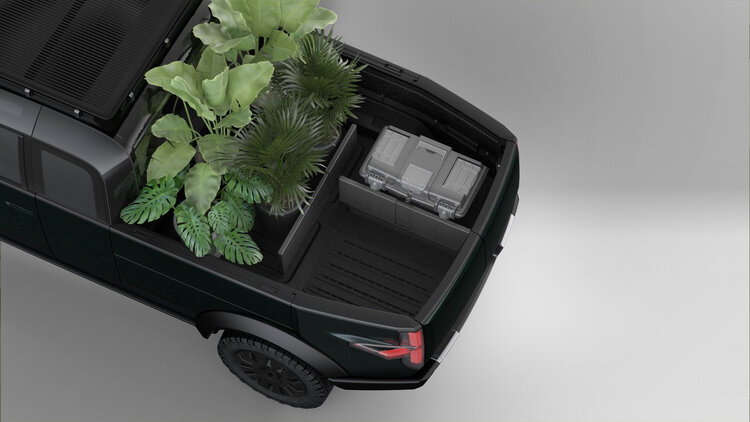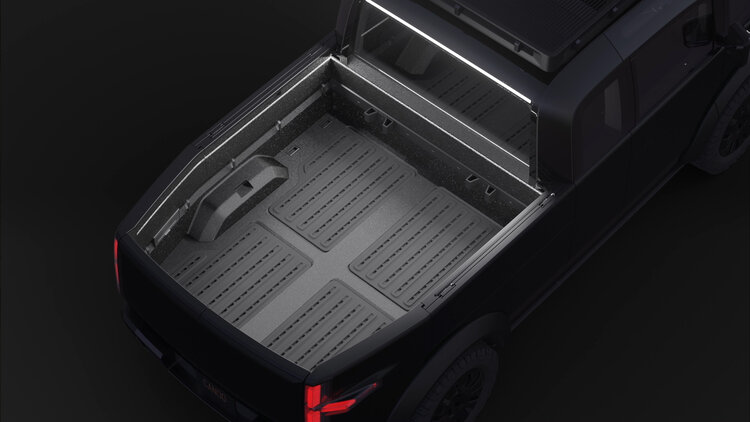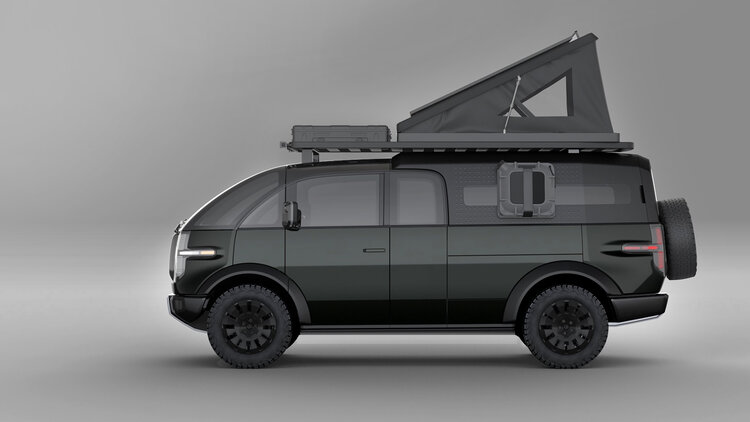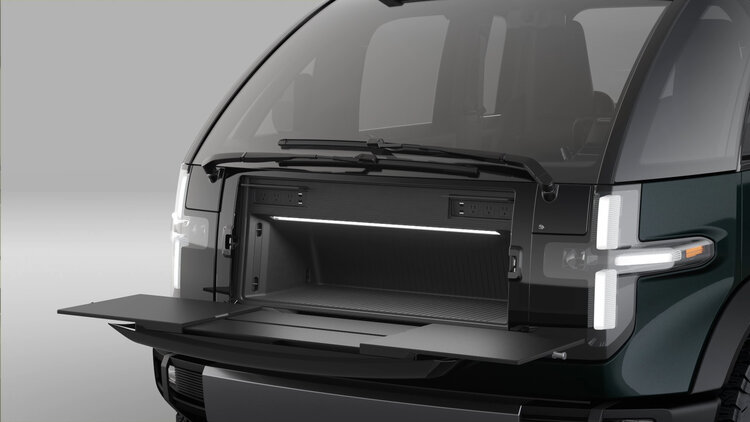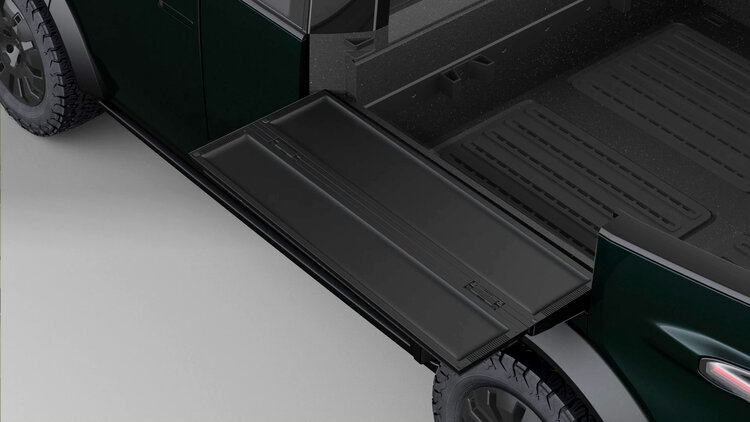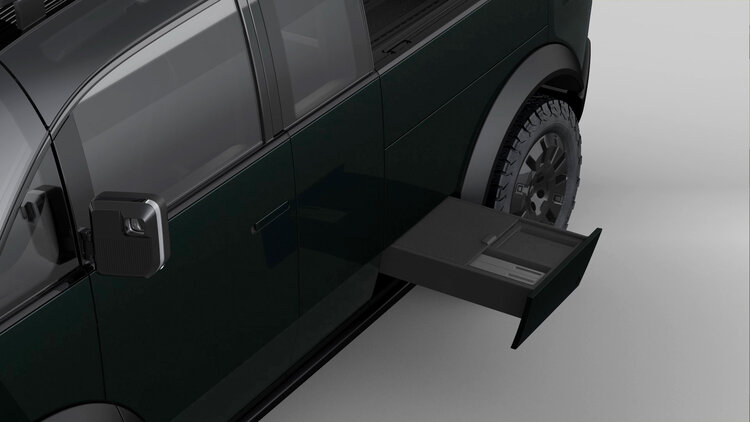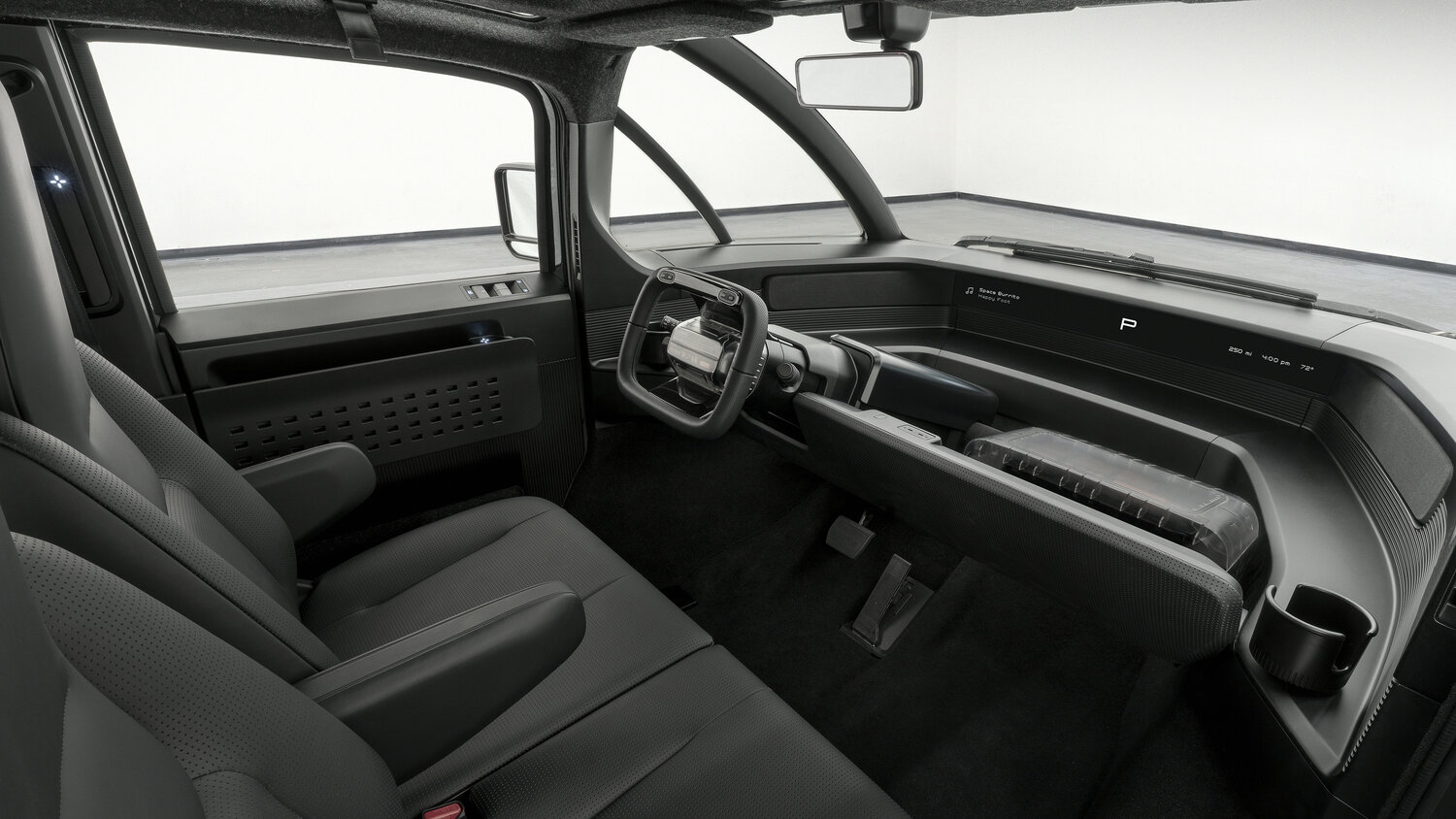While the merits of electric vehicles still whip up heated debates in the comment sections, one thing is for sure: modular EV platforms like Canoo’s mean there’s so much room for activities.
With the entire drivetrain, powerpack, and suspension packed into a skateboard-like deck, the Canoo platform leaves a ton of room for all kinds of accessories throughout the vehicle’s body. When applied to something like the new Canoo Pickup, that means all kinds of hidden compartments for gear storage, integrated workbenches, tons of interior room, and options for a full camper set up.
Following the Canoo van, and MPDV (Multi Purpose Delivery Vehicle) which use the same platform, the pickup is the latest – and possibly most interesting addition for our audience. With a look that is reminiscent of the old VW Transporter pickups, the Canoo Pickup certainly stands out. Maybe not as much as a CyberTruck, but a refreshing change from the norm.
For the cycling crowd, the Canoo Pickup has a lot of potential. Options like integrated wheel chocks could be used for transporting bikes without a rack – or for those days where you plan to ride the moto instead. To ensure there is plenty of room in the bed, the 6ft bed has an expandable deck for longer bikes, or carrying 4×8′ sheets of plywood and other building supplies.
Canoo calls it one of the most advanced truck beds out there, and by the looks of it, that may not be far off. Configurable to almost any need, the bed uses an “aircraft cargo style” bed floor to provide plenty of options when it comes to securing and transporting cargo. There’s also a built-in bed lighting system, and charging station for accessories, tools, and other needs.
For the #vanlife crowd, Canoo suggests that there will be an optional camper shell which combines with the full roll-down rear window for pass-through into the cab. Options like an extended roof rack open up more cargo storage options including rooftop tents.
Further adventure-worthy options include a front workbench space with internal storage including more charging stations. The sides of the truck bed also fold down into usable workbench space, along with hidden storage cabinets below that double as steps to help you reach the cargo on the rack up top.
Inside, the steer-by-wire system supposedly eliminates the traditional steering column bulk for a roomy interior that is easier to get in and out of. Not to mention, one that offers even more options for storage and customization. It seems that the standard configuration will be a two seater, but Canoo mentions options for bucket, bench, and a third seat.
Powered by a dual or rear motor setup, you have the option for RWD or 4WD and up to 600hp and 550 lb-ft of torque for the dual motor setup. Canoo claims that their battery pack is designed to be updated, replaced, or repaired to extend durability and should be good for up to 200+ miles of range depending on use.
That means you probably won’t be making any long road trips or venturing far into the backcountry without frequent stops to charge – but who knows what battery and charging tech will be like by the time this pickup starts shipping in early 2023.
If you can’t wait, the company says it will begin taking preorders in Q2 of 2021.
Vehicle specifications²:
· Dual or rear motor configurations
· Up to 600 hp and 550 lb-ft of torque with dual motors
· Vehicle payload capacity of 1800lbs
· 200+ miles of battery range
· Steer-by-wire and brake-by-wire technology
· Tow hitch receiver
· Wheelbase: 112.2 inches/ 2850 mm
· Overall length: 184 inches/ 4677 mm (with bed extension: 213 inches/ 5400 mm)
· Width: 78 inches/ 1980 mm (with mirrors: 87 inches/ 2209 mm)
· Height: 76 inches/ 1920 mm (with roof rack: 82 inches/ 2085 mm)
· Bed W,L: 64 inches/ 1627 mm x 72 inches/ 1817 mm (with extension: 64 inches/ 1627 mm x 102 inches/ 2600 mm)
· Bed depth: 21 inches/ 522 mm
· Roof rack W,L: 48 inches/ 1230 mm x 54 inches/ 1360 mm (as shown)
· Tires: 265 60r18 (as shown)
¹ Individual features available on select vehicles
² Vehicle specifications and performance metrics are prospective, reflecting current engineering and design direction, manufacturer simulations and EPA-estimated average range calculation methodology. Final production vehicle specifications and performance metrics are subject to change.
